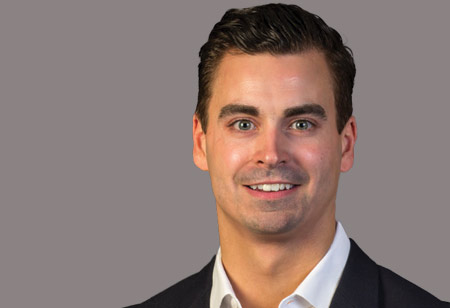He is a recognized expert in financial risk management, executive liability and the mitigation of specialty risks through insurance and insurance-linked securities. He consults on a variety of liability matters and risk transfer options, and advises clients on corporate governance issues, investor lawsuits, regulatory investigations and claims management.
Matthew’s clients include some of Canada’s largest publicly traded and privately owned companies, including many large, multinational clients. He specializes in working with investment management firms, insurance companies, private equity firms and pension plans. Matthew was a finalist at the Insurance Business Canada Awards for Young Gun (Under 40) in 2018, and was named in Insurance Business Canada’s Elite Broker list in 2021. He holds an MBA (with distinction) from Cornell University and is a CFA Charterholder.
The news is startling and unequivocal. In the first half of 2024, global losses from natural catastrophes hit $120 billion. In Canada, summer of 2024 was particularly hard hit, with more than $7 billion of insured damages coming from just a few storms across the country.
Real estate owners who take proactive steps to assess risks, share data-driven stories, and explore alternative coverage options will stay ahead in an evolving property insurance market
Insurance carriers are feeling the pain. With record-breaking losses from just the first half of 2024, they are concerned that insured losses this year might hit $100 billion. What’s worse, the current hard market has been a real challenge for insurance buyers for years already, as a result of poor results and lack of profitability on the property side for insurers.
With wildfires, hail storms and flooding pelting cities across Canada more and more frequently, real estate owners and operators will have to find a different way to protect their assets in the property market in the coming year. The same old renewal process won’t be enough to secure adequate coverage.
Yet there are real solutions, especially when the business owner knows the right way to control the story. Follow these steps to control the story and protect your profits:
Avoid the issue of perceived vs. actual preparedness
Many property owners think they’re covered, but they may not have thoroughly assessed the risks. When preparing for an insurance renewal, start early. Work with your advisor or broker to look at all the risks and assess your preparedness for each one. For example, you might have equipment protection for hail but an outdated building envelope that won’t adequately protect you from wind. Identify and be vocal about the investments you’ve made to protect your property from harm – and those you haven’t.
Learn how to share your story with carriers
Even in a hard market, there is still capacity to cover real estate owners and operators. Take the list of investments you’ve made – whether it’s water leak detectors to sense flooding, building a structure to protect your equipment from harm or even a fence around the property – and use it to tell your story. Use strong analytics to describe the risks and CAT modelling to demonstrate the ways you are a good risk because you have already prepared and protected your properties. Share that data-driven story to push your application to the top of the pile or leverage your advisor’s data analytics and modelling to drive your narrative.
Explore program alternatives to fill in the gaps
Beyond traditional insurance coverage, there are a wide variety of alternative risk vehicles that can be used to plug gaps in coverage. However, these vehicles – such as captives, parametric insurance, trust plans and different types of self-insurance – vary considerably, some offering more fixed costs and others coming with greater volatility. The right option for your organization will depend on your appetite for risk. Fortunately, your advisor or broker can help you to make the right choice by working with the analytics to establish values, compare limits and perform catastrophe modelling. Human psychology tends to over emphasize short-term premium savings versus retaining long term risk which is why the modelling needs to be rigorous since implementation takes time to properly execute as does educating stakeholders.
With the property market continuing to evolve, staying ahead of the curve is essential to safeguarding profits. And real estate business owners that create their own solutions rather than settling for what’s on offer will always come out ahead.


